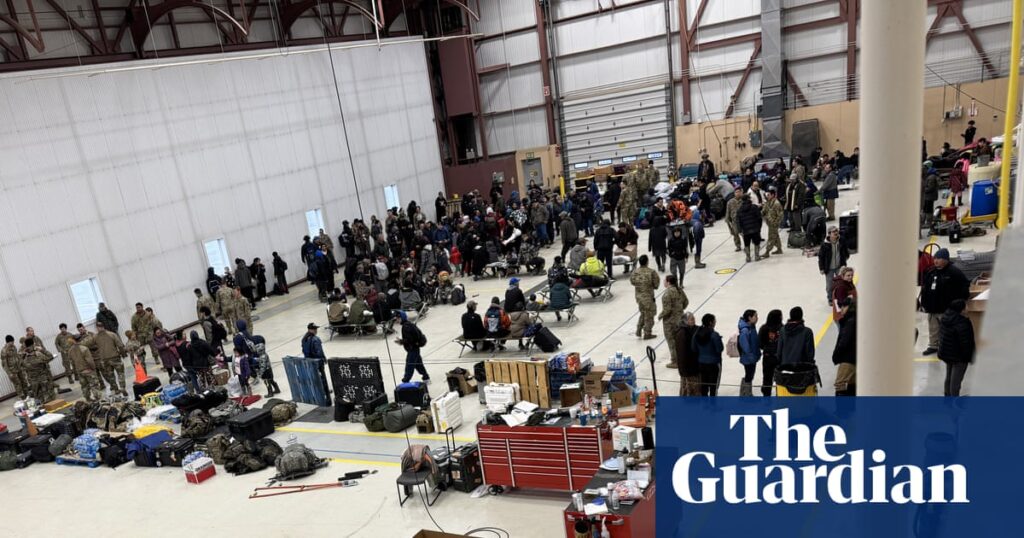Authorities in Alaska are evacuating hundreds from villages on the state’s south-west coast that were inundated by the remnants of a typhoon last weekend, in one of the “most significant” airlifts in the state’s history.
Over the weekend, the remnants of Typhoon Halong hit remote communities in the Yukon-Kuskokwim Delta, in the south-western part of the state, decimating two small villages and displacing more than 1,500 people.
The hardest-hit communities included Kipnuk, population 715, and Kwigillingok, population 380. Shelter conditions in both communities were rough, Alaska Public Media reported, and local authorities had asked the state to evacuate residents.
At the Kwigillingok school, where many residents had taken refuge, toilets were not working, Buggy Carl, a Kipnuk tribal administrator, told APM. In Kipnuk, power and telecommunications were spotty.
About 300 evacuees were being brought to Anchorage, hundreds of miles from the battered communities, according to Alaska’s department of military and veterans affairs. But local authorities acknowledged not all residents would be willing to evacuate.
Jeremy Zidek, the emergency management office spokesperson, could not say on Wednesday evening where exactly those evacuees were from. He said some people in the affected communities might choose to stay back or to stay with others.
Shelter space in the south-west Alaska regional hub of Bethel had been reaching capacity, officials said.
The weekend storm brought hurricane-force winds and pushed the tide line 6ft (1.8 meters) above normal in the communities, according to the National Weather Service.
“It’s catastrophic in Kipnuk. Let’s not paint any other picture,” Mark Roberts, an incident commander with the state emergency management division, said during a news conference on Tuesday. “We are doing everything we can to continue to support that community, but it is as bad as you can think.”
The communities are located near the Bering Sea coastline, and are only accessible by boat or air. The crisis has drawn attention to Trump administration cuts to federal grants aimed at helping some small, mostly Indigenous villages prepare for the ravages of storms or mitigate their disaster risks.
A $20m US Environmental Protection Agency grant to Kipnuk for example, was terminated by the Trump administration, a move challenged by environmental groups.
Carl, the Kipnuk tribal administrator, said he was focused on one thing.
“Right now, just trying to convince everybody to go before the next storm hits,” he said.

